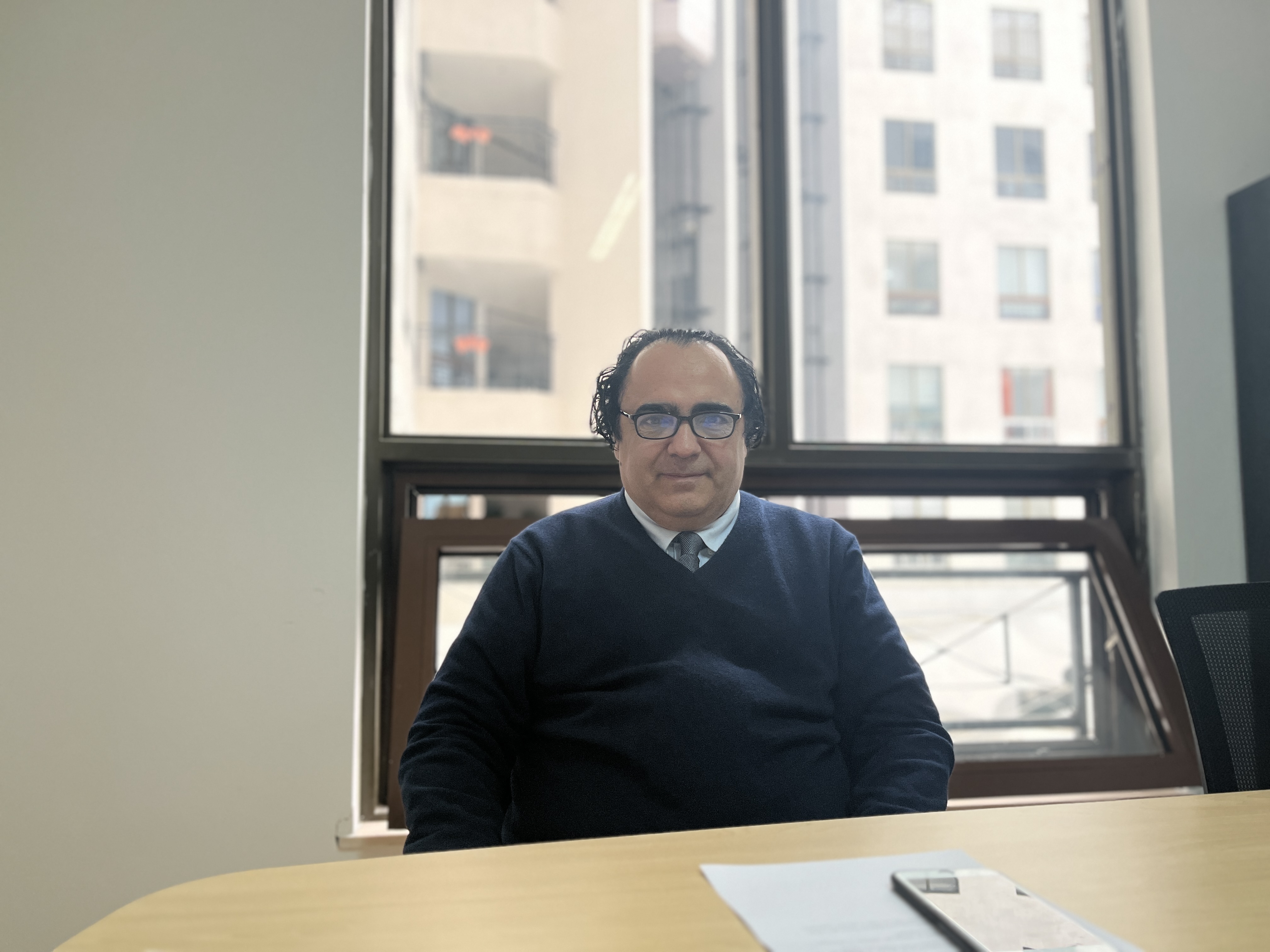
Henry H. Radamson.?(Photo?by?LONG?Yun/?S&T?Daily)
By?BI?Weizi?&?LONG?Yun
Swedish scientist Henry H. Radamson, a member of the European Academy of Sciences, has made great achievements in the fields of nanoelectronics, nanophotonics, thermoelectric materials and infrared sensors. Since 2016, he has been a full-time researcher at the Institute of Microelectronics, Chinese Academy of Sciences (CAS) and a lecturer at CAS University, committed to translating his research results into tangible benefits for people.
Love leads the way to China
Radamson earned his master's degree in physics and Ph.D. in materials physics from Link?ping University (LiU), one of the largest, most innovative and highly regarded academic institutions in Sweden. "Then I was offered a job as a researcher at KTH Royal Institute of Technology, working mainly on germanium (Ge) and silicon (Si), the alloy material germanium tin (GeSn) and the applications of these materials," he told Science and Technology Daily.
He was dubbed an "industrial professor" there because he was actively involved in commercializing his research, but he believes that no technology works in reality the way it does theoretically, and only when a theory is put into practice can it bring real benefits to people.
From 1997 to 2016, he created great value for Sweden in a number of national and international industrial projects, such as the development of shortwave infrared and mid-infrared detectors and night vision applications of germanium, silicon germanium and germanium tin materials, including Ericsson's high-frequency silicon germanium (SiGe) bipolar transistor project.
Impressed by the supportive research atmosphere, adequate funding programmes, friendly Chinese colleagues and talented Chinese students, Radamson made a big decision to continue his studies in China at the invitation of the director of? Institute of Microelectronics. "Chinese culture is very close to ours. I know a lot about China and Chinese food is my favourite [cuisine]. If you like somewhere, you go there," he said, adding that Beijing is now his second home.
Broad applications of nanotechnology
Radamson's current research focuses on nanophotonics, electronics and infrared optoelectronic devices. "To put it simply, my main line of research is the integration of electronics with optics," he said, explaining how the mobile phone has gone from being a big, clunky brick to the size of a palm, due to the rapid development of integrated circuit (IC) technology.
Nanotechnology has wide-ranging applications in various industries, such as night vision systems for cars and medical scanning imaging. "We hope that the device we develop will be as light as a mobile phone and can scan the body directly to detect abnormalities in blood flow and detect tumors at an early stage," he said, adding that photonic ICs can make components smaller, use less power and have more functions.
Radamson went on to outline the many potential applications of nanotechnology — clothes and shoes made with nanotechnology can be effectively waterproof; for people who love beauty, nanomaterials can also be used to make sunscreen and anti-wrinkle creams; screens on computers, mobile phones and other devices are also inseparable from nanotechnology; while in the medical field, nanorobots can treat diseases in a more targeted way.
"Nano chips are faster to calculate and of course more difficult to design and manufacture. We need ultra-clean laboratories to process nanochips. But the continuous advancement of technology is for the public," he said, emphasizing that advanced technology should be affordable for everyone, which explains his determination to commercialize his findings.
Promoting international collaboration
As a member of the Executive Committee of the European Materials Research Society, he has spared no effort in promoting cooperation between China and the rest of the world. "High-level academic conferences are held every year in the field of materials science, and close links have been established between industry, universities and companies in R&D centers," he said, adding that he was honored to be able to build a bridge between China and Europe in research and education.
Over the past two years, Radamson has facilitated cooperation among Tel Aviv University in Israel, Italian universities and the Institute of Microelectronics at CAS. "We cooperate in organizing some seminars and workshops, and at the same time these scientists come to China and teach students at the University of the Chinese Academy of Sciences. Our international cooperation should not only be about research, but also about training young people. These young people are the future," he said.
The trio will conduct a series of experiments in fields such as life science, fluid physics, combustion science and materials science. Notably, this is the first time that fruit flies have been taken on a Chinese space mission as experimental subjects. What made scientists choose fruit flies? What experiment will they undergo?
